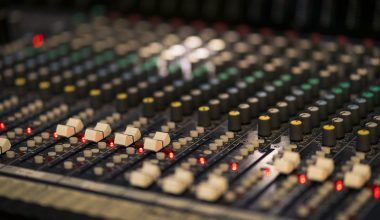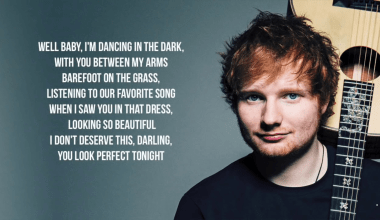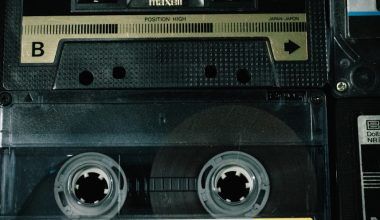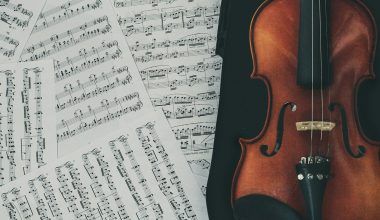Start Your Musical Journey
Music has the power to move hearts, express feelings, and tell stories. If you’ve ever dreamed of creating your own song but felt overwhelmed, don’t worry—you’re not alone! Making music might sound complicated, but with the right guidance and a bit of patience, anyone can do it. In this guide, we’ll teach you how to create a song in a way that’s easy to follow, even if you’re just starting out.
By the end of this blog, you’ll have a clear idea of how to turn your ideas into a melody, write lyrics, and share your creation with the world.
Step 1: Find Your Inspiration
Every song starts with an idea. Think about what’s on your mind or what you feel deeply about. It could be:
- A happy memory
- A difficult time in your life
- A beautiful view you saw
- A movie or book that moved you
Inspiration is everywhere. Close your eyes and let your thoughts wander. What story do you want to tell?(create a song) What emotion do you want to share?
Example: If you’re feeling nostalgic, you might write about the joy of childhood or the longing for someone from your past.
Tip: Keep a notebook or a notes app handy. Whenever a word, phrase, or idea strikes, jot it down. These can become the building blocks of your song.
Step 2: Choose a Theme for Your Song
Once you’ve found inspiration, decide what your song will be about. A clear theme gives your song focus and helps connect with listeners.
Some popular themes are:
- Love and heartbreak
- Friendship and togetherness
- Overcoming struggles
- Celebration and joy
- Nature and beauty
Why This Matters: Imagine your song as a story.(create a song) The theme is like the main idea of that story—it keeps everything tied together.
Example: If your theme is love, your lyrics and melody will reflect feelings of affection, longing, or even heartbreak.
Step 3: Write the Lyrics
Lyrics are the words of your song, and they are one of the most important parts. Start simple. Don’t worry about fancy words or perfect rhymes. Just write what feels true to you.
How to Write Lyrics:
- Start with the Chorus: The chorus is the most memorable part of the song. It’s the part people will sing along to.
- Example: “You are my sunshine, my only sunshine.”
- Build Verses Around Your Theme: Verses tell the story. Add details to explain the feelings or events leading up to the chorus.
- Keep It Simple: Use easy words and short sentences. This makes your song relatable and catchy.
Step 4: Find a Melody
The melody is the tune that makes your song memorable. You don’t need to be a trained musician to create a melody.
- Start Humming: Play with your voice. Sing your lyrics and see what sounds good.
- Experiment with Instruments: If you know how to play guitar, piano, or even a simple keyboard app on your phone, use it to find a tune.
- Keep It Catchy: A good melody is simple and easy to hum. Think of famous tunes like “Twinkle, Twinkle, Little Star.”
Tip: Record yourself as you experiment with melodies. Sometimes the best ideas come when you’re just playing around.
Step 5: Choose Your Chords
Chords are groups of notes that make your melody sound full and rich. Beginners can use simple chord progressions like:
- C – G – Am – F (used in many pop songs)
- G – Em – C – D (great for rock and folk songs)
If you don’t know how to play chords, don’t worry. You can find easy tutorials online or use digital tools like chord generators to help.
Step 6: Create a Rhythm
Rhythm is the heartbeat of your song. It gives your music energy and sets the mood. Ask yourself:
- Should it be slow and emotional?
- Should it be upbeat and dance-friendly?
You can create rhythms using:
- Drum machines
- Beat-making apps like GarageBand
- Simple claps or tapping on a surface
Step 7: Arrange Your Song
Now that you have your lyrics, melody, chords, and rhythm, it’s time to arrange your song. This means deciding the order of the parts:
- Intro: The opening notes or lines of your song.
- Verse: Tells the story or sets the scene.
- Chorus: The catchy, emotional center of your song.
- Bridge: A different section that adds variety.
- Outro: How the song ends.
Step 8: Record Your Song
Recording your song makes it real. Don’t worry if you don’t have a professional studio. Here’s how you can record at home:
- Use your phone for quick demos.
- Try free software like Audacity or GarageBand.
- Invest in a basic microphone for better sound quality.
Step 9: Mix and Master Your Track
Mixing and mastering make your song sound polished. Mixing adjusts the levels of instruments and vocals, while mastering prepares your track for release. You can:
- Learn to mix using free tutorials.
- Use AI tools like those offered by Deliver My Tune for quick and professional results.
Congratulations! Your song is ready. Now it’s time to share it. You can:
- Upload it to platforms like Spotify, YouTube, or SoundCloud.
- Share it on social media to reach friends and fans.
- Enter songwriting competitions to get noticed.
Tip: Use services like Deliver My Tune to distribute your music to major platforms easily
Bonus Tips for Writing Different Types of Songs
Love Songs
- Write from the heart. Describe your emotions honestly.
- Use metaphors like comparing love to the sun, stars, or ocean.
Party Songs
- Use simple, repetitive lyrics.
- Keep the beat fast and fun.
Sad Songs
- Use slow melodies and minor chords to create an emotional vibe.
- Reflect deeply on your feelings to connect with listeners.
Common Questions About Songwriting
1. Do I need expensive equipment to create a song?
No. You can start with just your voice and a phone to record ideas. Tools and instruments can come later.
2. How long does it take to write a song?
It depends. Some songs come together in minutes; others take weeks. Take your time and enjoy the process.
3. What if I can’t play an instrument?
You can use online tools to create melodies and beats. Many successful songwriters collaborate with musicians or producers.
Why Anyone Can Write a Song
Songwriting isn’t just for professionals. It’s a way to express yourself, connect with others, and have fun. Whether your song is simple or complex, what matters most is that it comes from you.
If this guide inspires you, start today. Your song could become someone’s favorite tune tomorrow!
Related Articles:
For further reading, explore these related articles:
- Does Spotify Pay Artists? Understanding Spotify’s Payment System
- How to Compose a Song: The Ultimate Step-by-Step Guide
- How to Upload Audio on Instagram: An Easy Guide for Everyone
For additional resources on music marketing and distribution, visit Deliver My Tune.






